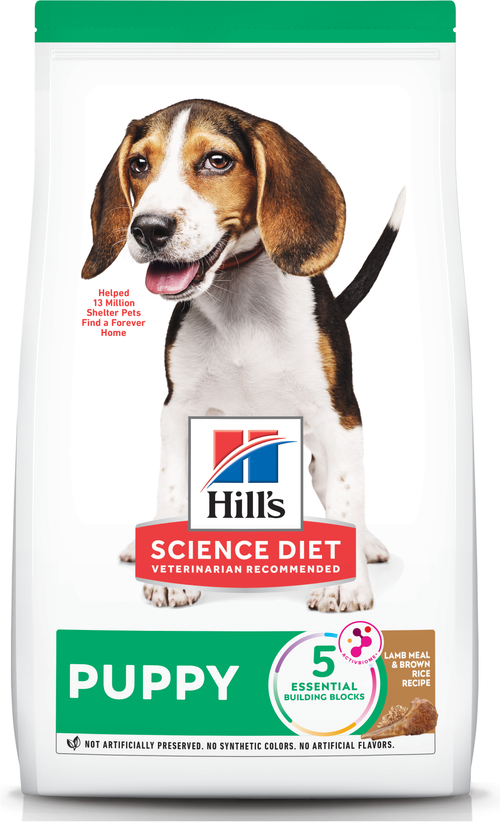
-
Find the right food for your petTake this quiz to see which food may be the best for your furry friend.Find the right food for your petTake this quiz to see which food may be the best for your furry friend.Featured products
 Puppy Large Breed Chicken & Brown Rice Recipe
Puppy Large Breed Chicken & Brown Rice RecipeVital nutrients to support 5 essential building blocks for lifelong health
Shop Now Hill's Science Diet Adult 7+ Senior Vitality Small & Mini Chicken & Rice Recipe Dog Food
Hill's Science Diet Adult 7+ Senior Vitality Small & Mini Chicken & Rice Recipe Dog FoodImproves everyday ability to get up & go
Shop Now Puppy Lamb Meal & Brown Rice Recipe
Puppy Lamb Meal & Brown Rice RecipeVital nutrients to support 5 essential building blocks for lifelong health
Shop NowFeatured products Adult 7+ Chicken Recipe Cat Food
Adult 7+ Chicken Recipe Cat FoodSupports energy level and beautiful fur in mature cats
Shop Now Adult Sensitive Stomach & Skin Cat Food
Adult Sensitive Stomach & Skin Cat FoodHighly digestible food that is gentle on the stomach. Nourishes skin & promotes lustrous fur.
Shop Now Adult Indoor Chicken Recipe Cat Food
Adult Indoor Chicken Recipe Cat FoodSupports energy level and beautiful fur in indoor cats
Shop Now -
Dog
- Dog Tips & Articles
-
Health Category
- Weight
- Food & Environmental Sensitivities
- Urinary
- Digestive
- Joint
- Kidney
-
Life Stage
- Puppy Nutrition
- Adult Nutrition
Cat- Cat Tips & Articles
-
Health Category
- Weight
- Skin & Food Sensitivities
- Urinary
- Digestive
- Kidney
-
Life Stage
- Adult Nutrition
Featured articles Water
WaterDiscover why water is the most important nutrient for your dog or cat to live a healthy life. Find out how much water your pet should consume each day.
Read More The Incredible Science Behind Your Pet's Microbiome
The Incredible Science Behind Your Pet's MicrobiomeLearn what a pet's microbiome is, how it contributes to your pet's gut & overall health, and why nutrition is important in maintaining healthy microbiomes.
Read More Pet Food Storage Tips
Pet Food Storage TipsDiscover how and where to store your dry, as well as canned, dog and cat food. Learn how to find the "best before" dates on all Hill's pet food packaging.
Read More -


You can tell when looking at them that some dogs are made for cold weather. Siberian huskies, Malamutes, and St. Bernards bark with glee, "Bring on the cold and snow!" Their coats are made with dense, warm hair that keeps them naturally insulated. But other breeds are likely shivering at the mere thought of going outside when the snow starts to swirl.
The cold isn't just uncomfortable for some dogs in winter. It can be downright dangerous. That's why as temperatures drop, it's important to take safety precautions for your dog.
How Much Time Should My Dog Spend Outside?
Overexposure to the cold is just as dangerous to dogs as it is to humans. Just because they have a winter fur coat does not mean that they are not susceptible to the same cold-weather sicknesses and injuries that can afflict humans. Spending too much time out in the cold can be hazardous to their health so it is important to limit their time outdoors during sub-freezing temperatures. This doesn't mean that your dog shouldn't spend time out in the snow and cold beyond potty breaks. In fact, watching a dog prance around in the snow can be one of the greatest joys for a dog parent. Throwing snowballs and watching your dog try and fetch them can help him get the exercise that he needs to keep the winter weight off, but as you start to get cold outside, he is probably also starting to feel the chill.
If you have an outdoor playpen or dog house for your dog that he uses during the summer months, make sure to bring him inside after brief periods outside. Never leave him outside overnight. If he is used to spending more time outdoors, then you can set up an area in the garage to help keep him warm. If he does spend any amount of time in his dog house make sure to leave him blankets or towels to snuggle up in, and change them out each day as they get cold. It is also probably a good idea to invest in some warming lamps to help keep the dog house's temperature regulated.
A wintery outdoors is nothing to shy away from for your dog, but just as you would with children, make sure they come inside after so long to prevent any health issues like those listed below.
How Can I Tell if My Dog is Too Cold?
The most obvious sign a dog is cold is shivering, the body's natural way to generate heat. Other common indications that your dog might be suffering from the cold include an unwillingness to go outside, slow and clumsy movements caused by cold joints and muscles, and less energy than normal.
Some dogs are less tolerant of the cold than others. Petcha explains that body fat, size, age, coat, and overall health affect your dog's tolerance of the cold. That's why tiny Chihuahuas and lean greyhounds, for example, aren't well-suited for a frigid blast.


Tasty Tips
What Do I Do If Hypothermia Sets In?
It's important to pay attention to whether your dog is cold. Despite their furry coats, dogs can suffer from life-threatening issues like hypothermia and frostbite if they're left in the cold for too long.
Common symptoms that indicate your dog might have hypothermia are intense shivering, listlessness, and frostbite. Frostbite on dogs most often occurs on exposed areas, such as the tail, tips of the ears, scrotum, and foot pads. You can tell if your dog has frostbite because the affected skin becomes very pale with a bluish/white hue that is due to a lack of blood flow, explains PetMD.
If your dog is suffering from hypothermia, it's important to act quickly to prevent serious illness or even death. PetMD advises taking these steps:
- Bring him inside
- Wrap him in blankets warmed in a dryer or on a radiator
- Call your veterinarian and get him in to see them. They will check him to ensure that there aren't any lasting effects or other problems like frostbite.
How Can I Keep My Dog Warm Outside?
If you have a dog with shorter hair, whether it's naturally short or it's styled that way, a sweater or jacket might give him some comfort in the cold, just like a coat does for you. Perhaps consider no-slip booties for your dog. Ice and snow can easily accumulate in your dog's pads, which may result in frostbite. When he comes inside, make sure to dry any accumulated snow from his body as it can sometimes mat within his fur. This will help him warm up more easily.
Dogs in winter don't have to be miserable. Keeping your dog comfortable in cold weather will make him excited to play with you in the winter wonderland. Now go fetch some snowballs!


Kara Murphy is a freelance writer and pet parent who lives in Erie, Pa. She has a goldendoodle named Maddie.
Related products

Vital nutrients to support 5 essential building blocks for lifelong health

Improves everyday ability to get up & go

Vital nutrients to support 5 essential building blocks for lifelong health

Improves Everyday Ability to Get Up & Go
Related articles

Learn basic steps & precautions for treating a cut on your dog, including what you can put on the cut, and when you should take them to the vet.

Discover fun and engaging games and other ways to help your dog exercise, keeping him happy and healthy.

Understand the role that Omega-6 and Omega-3 fatty acids play in your dog's overall health, and how you can ensure they are getting enough.

Learn how to stop your dog from begging at the dinner table, and understand how it can help contribute to his health.

Put your dog on a diet without them knowing
Our low calorie formula helps you control your dog's weight. It's packed with high-quality protein for building lean muscles, and made with purposeful ingredients for a flavorful, nutritious meal. Clinically proven antioxidants, Vitamin C+E, help promote a healthy immune system.
Put your dog on a diet without them knowing
Our low calorie formula helps you control your dog's weight. It's packed with high-quality protein for building lean muscles, and made with purposeful ingredients for a flavorful, nutritious meal. Clinically proven antioxidants, Vitamin C+E, help promote a healthy immune system.


